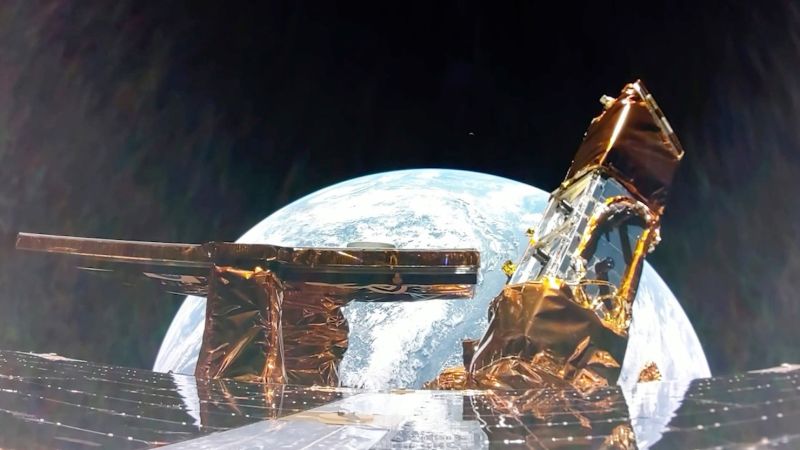The ongoing advancements in lunar exploration, spearheaded by private-sector companies, herald a new era of robotic missions aimed at preparing for human return to the moon, encapsulated in the broader scope of NASA’s Artemis program. This initiative underscores a collaborative effort between governmental bodies and commercial enterprises to revive human presence on the lunar surface for the first time in fifty years. Significantly, the involvement of firms like Texas-based Firefly Aerospace, known for its innovative designs and engineering prowess, adds a dynamic layer to this ambitious venture.
Firefly Aerospace is taking the lead with its Blue Ghost lunar lander, scheduled for a landing on the near side of the moon at precisely 2:34 a.m. CT (3:34 a.m. ET) on a forthcoming Sunday. Despite the excitement surrounding this venture, it’s imperative to acknowledge that success is far from guaranteed. Drawing on historical data, lunar landing attempts have historically been fraught with challenges, with approximately half resulting in failure. A recent achievement by Texas-based Intuitive Machines, which successfully executed the first private-sector soft-landing in February 2023, illustrates both the potential and the peril associated with these missions.
Under the leadership of CEO Jason Kim, Firefly Aerospace has expressed a high degree of confidence in the Blue Ghost’s propulsion systems based on their extensive experience building rockets. The company employs a reaction control system designed in-house by a team that equally excels at rocket engine design, ostensibly reducing the level of risk associated with the mission. Given the absence of a thick atmosphere on the moon, the ability to decelerate effectively becomes critical. The sophisticated navigation and control systems are anticipated to maintain the lander’s orientation as it descends toward the rugged lunar landscape characterized by its treacherous craters.
If the mission proceeds as planned, Firefly promises an exciting visual experience, aided by various sensors ingeniously integrated within the lander’s design. Following the landing, mission control is expected to receive real-time data confirming the success or otherwise of the attempt, with images anticipated to stream approximately thirty minutes post-touchdown.
Firefly’s selected landing zone near Mons Latreille seeks to mitigate potential disruptions caused by large magnetic anomalies on the lunar surface. As articulated by Ryan Watkins from NASA’s Exploration Science Strategy and Integration Office during a December briefing, such anomalies could interfere with payload measurements. The payload comprises ten science instruments and demonstration technologies provided by NASA, with some devices already transmitting data as the lander traverses the immense distance of 239,000 miles (384,400 kilometers) between Earth and the moon.
Among the impressive array of equipment accompanying Blue Ghost is a prototype designed to test GPS use both in lunar orbit and on the surface, a vacuum intended to collect lunar soil, and a telescope focused on observing how Earth’s magnetosphere reacts to varying conditions in space. This mission is positioned not only for data acquisition but also for delivering breathtaking visuals, including photographs of an eclipse, during which Earth will obstruct sunlight from reaching the lunar surface.
In a particularly remarkable undertaking, Blue Ghost is expected to document the lunar horizon glow—a phenomenon witnessed only by Apollo 15 and 17 astronauts. Captured in high-definition 4K video, this will provide invaluable insights to a global audience into an aspect of the lunar environment previously obscure to modern viewers. Moreover, as the lunar night envelops its landing site, Blue Ghost will continue to collect data in subzero temperatures approaching minus 280 degrees Fahrenheit (minus 173 degrees Celsius), which has historically posed challenges for lunar landers.
This determination by NASA to push the boundaries of exploration has led to an incremental adjustment in the contract value awarded to Firefly to ensure durability against the harsh lunar conditions, now standing at $101 million. Importantly, this initiative is part of NASA’s Commercial Lunar Payload Services (CLPS), an industrial strategy that collaborates with private firms to enhance robotic exploration capabilities and ultimately facilitate human return under the Artemis program.
The scope of the CLPS initiative is expansive, with 14 companies eligible to bid for contracts, aimed at encouraging private investment in lunar landers. While companies like Astrobotic Technology and Intuitive Machines have already made attempts—with varying degrees of success—the path toward successful lunar landings remains punctuated by significant hurdles. With Blue Ghost en route, joined by two additional commercial landers from Intuitive Machines and Japan-based Ispace, the lunar landscape is poised for a surge in exploratory endeavors. Each mission not only serves to gather data and provide insights into the lunar environment but also reflects the emerging potential of public-private partnerships in advancing humanity’s reach beyond our planet.












